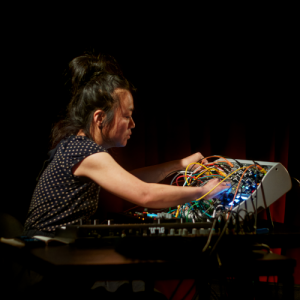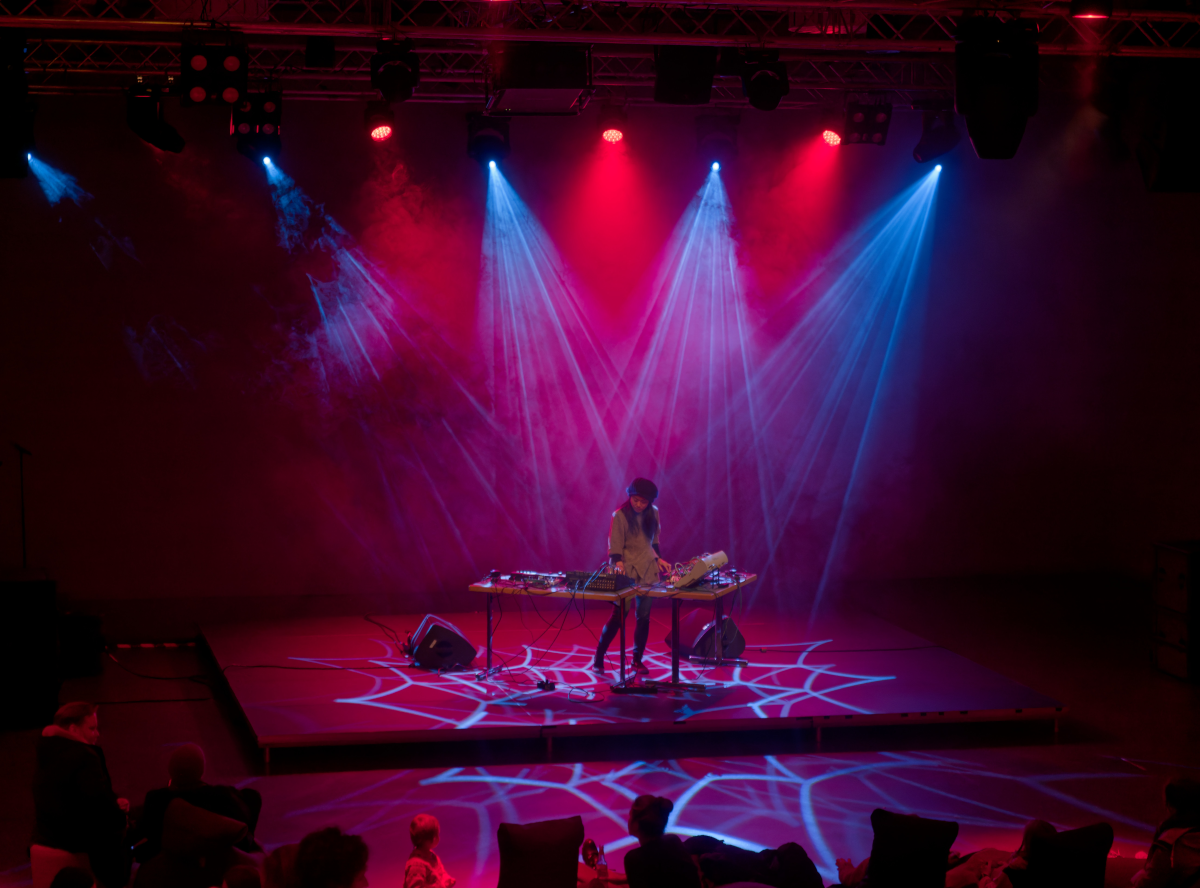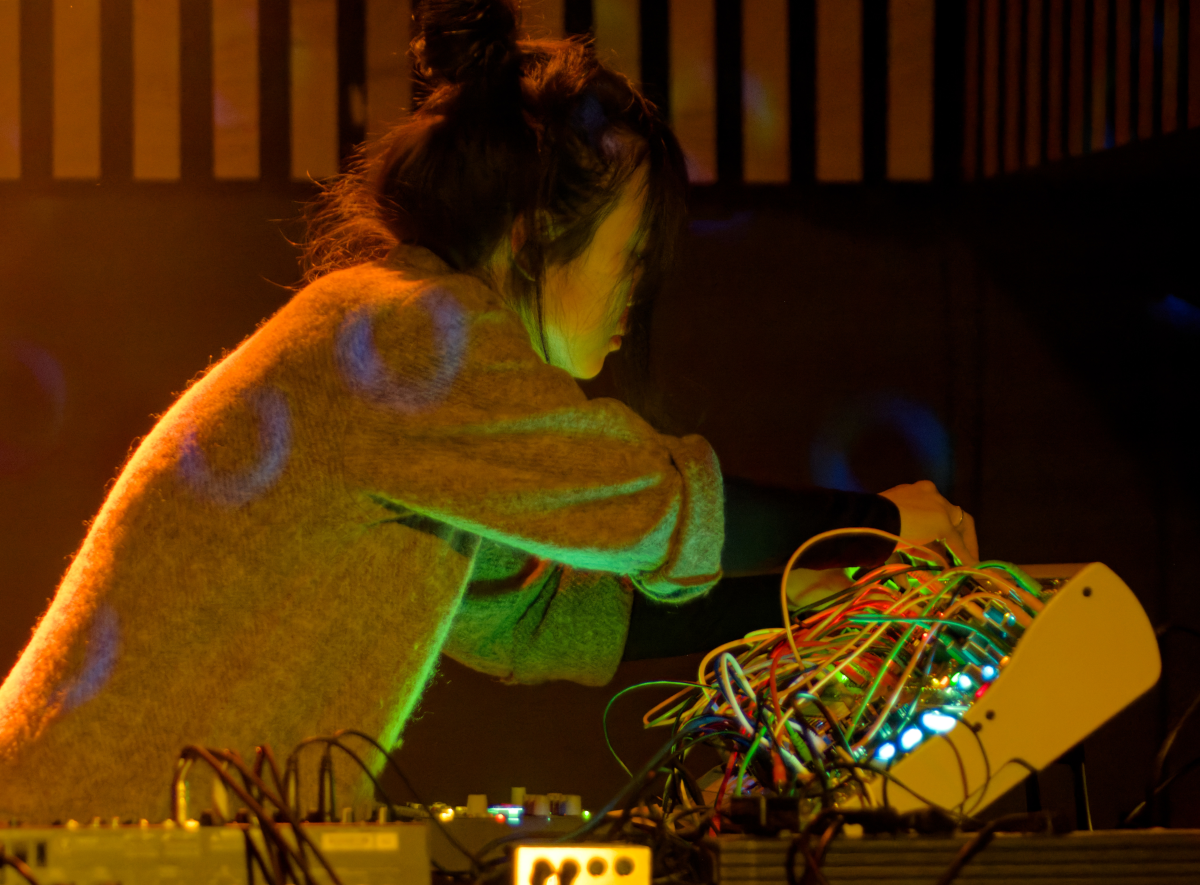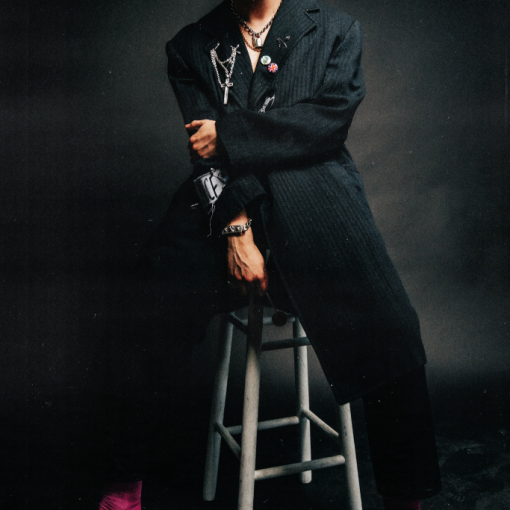
Originally from Kyoto and now resident in Berlin, Midori Hirano trained as a classical pianist and has incorporated electronic processing and field recording alongside acoustic instrumentation into her music.
As MimiCof, Midori has created experimental sounds and harmonies live and on recrod for the likes of Sonic Pieces, Alien Transistor, Longform Editions and Karl Records. Midori’s compositions have been used for dance performances, video installations and films.
Midori’s session for Philippe Petit‘s Modulisme series allowed her to showcase the impact that modular synthesis has had on her electronic sound, and she outlines the ways in which her music has evolved as a result.
When did you first become aware of modular synthesis as a particular way of making music, whether as part of electronic music in general or more specifically as its own particular format, and what did you think of it at the time?
My first experience to use modular synths in a practical way first came with Buchla 200 during my residency at EMS Stockholm in 2015. This experience made me want to start using modular synths myself, and I started to buy a few more and use them as my own musical tools around 2020.Since I’m classically trained, it’s still quite challenging but inspiring to use modular synthesisers, because unlike the piano or the other keyboard instruments, where you can just hit a key and get the sound you expect, the modular allows you to enjoy those unexpected sounds you may get by accident. Of course, the longer you use modular synthesis, the more you will learn about the functions of the system you have, your own instrument, and you will surely be able to control it to some extent and get the sound you expect.
But still, I think one of the attractions of using modular synthesis is that it enables you to explore between the sound you have in mind and the sound that deviates from it, and it’s also great to be free from any timeline… After using my modular setup more than two years now, I’m still fascinated by the potential of them.What was your first module or system?
My first module was Roland’s delay module Demora. I had been using this module as stand-alone and in conjunction with AIRA, an iPad app that was available to use in order to customise the internal signal paths, but I can’t use this app anymore after updating my iPad and Roland doesn’t seem to support it anymore. Then I bought Mutable Instruments‘ Plaits as next, which I’m still heavily using as a sound source. I was happy that they did the firmware update recently, before they – unfortunately – closed the company.
How long did it take for you to become accustomed to patching your own synthesiser together out of its component parts?
Maybe at least two years? I started performing with my modular setup only from last year, so I know there are still a lot to learn. And my system is not completed yet. But like many modular synth users do, my modules may be replaced from time to time, so there should always be something new to learn anyway.And I think that imaginary patching, researching and thinking about which module to buy next, is also an important part of the practice of working with modular synths.
Do you prefer single-maker systems (for example, Buchla, Make Noise, Erica Synths, Roland, etc) or making your own modular synthesiser out of individual components form whatever manufacturer that match your needs.
I prefer assembling my own modular synthesizer and this is the way I’ve been doing so far, because that is how I can customise the system in order to obtain the sound I want. And this is also financially more realistic for me to buy modules one by one and learn what they can do, and then decide which one I need next.But, to be honest, most of the modules I have right now are pretty much meeting standards – for example Maths, Morphagene, Wogglebug from Make Noise; Plaits and Marbles from Mutable Instruments, and also some LFOs, VC mixer, clock dividers from Doepfer. So I can’t say that my current system is original at all, but still I find it functional, especially when being used in conjunction with outboard gear.
But I’m open to many different modules, and try not to follow too many trends.East Coast, West Coast or No-Coast (as Make Noise put it)? Or is it all irrelevant to how you approach synthesis?
It’s quite irrelevant to how I approach synthesis, since I don’t have any images about the linkage of between the type of synthesis and the specific location in the world.
Do you tend to use pure modular systems, or do you bring in outside effect and devices when playing or recording?
When I’m working in the studio, I sometimes use pure modular systems, just because there are always lots of experimental possibilities I want to try with them. But when playing live or recording, I prefer to use other devices like a sampler or keyboard synthesizers. I often use an Octatrack as a sampler but also as a sequencer.I think I still have strong characteristics as a “player” in a classical sense, and I don’t think that will ever change, so the instruments like keyboards or piano that allow me to physically and quickly manipulate pitch or chords will stay with my setup.
Do you find that you record straight with no overdubbing, or do you end up multi-tracking and editing tracks in post-production?
It depends on the situation or what I want to record. But I prefer editing in post-production in most cases, when the recordings will officially be published as compositions.Do you pre-patch your system when playing live, or do you tend to improvise on the spot?
Both. The half of the system is often pre-patched, and I improvise with the rest. But my modular system is quite compact, which is not bigger than two rows of 104HP. For me this is the perfect size, not only to transport, but also to control or improvise everything for my sonic achievement.Which module could you not do without, or which module do you you use the most in every patch?
Mutable Instruments’ Plaits and Marbles are the ones I’m using the most, but some wave shaper or frequency shifter are used a lot too.
What do you think that can only be achieved by modular synthesis that other forms of electronic music cannot or makes harder to do?
One of the most impressive aspects about the modular synthesis in my opinion is that you can customise your set-up with any combination of modules you like and build your own sound world with the endless sonic possibilities. That is to say, sometimes you get a sound that you never thought you would get, and from that you get another idea that leads you to the next sound you want to create. I find this interactive experience is the most inspiring thing about modular synthesis, comparing to other types of instruments.Have you used various forms of software modular (eg Reaktor Blocks, Softube Modular, VCVRack) or digital hardware with modular software editors (eg Nord Modular, Axoloti, Organelle), and if so what do you think of them?
I had used the software modular that came with the AIRA modular, which could be connected to an iPad and used as an app in conjunction with AIRA. I found it interesting at first, especially becasue that was my first modular experience in my system. It was good to learn first how all works and meanings of the each modules. But eventually, patching on the software became as rigid as when working on DAW, and that’s why I became more into the hardware modular.
But I’m sure the software modular system could still be useful practically and also musically, if you get deep into it, but it was just not for me.What module or system you wish you had?
It would be great to have a Synthi AKS, because despite its very compact size, it still offers a wide sound spectrum. Or a Buchla system would of course be great to have, but probably it will be too much for me.Have you ever built a DIY module, or would you consider doing so?
No, I haven’t. I think I can be satisfied with exploring a ton of modules currently available in the world right now. It’s not like I’m not interested in doing DIY modules, but I prefer to keep my time as much as possible for producing music than being stuck on the circuit boards..
Which modular artist has influenced you the most in your own music?
Having discovered it through the Synthi 100, obviously Paul Pignon and Peter Zinovief would be the ones because of their huge dedication to build the instrument. It was great to hear Paul Pignon’s session for Modulisme. I absolutely adore Suzanne Ciani and all she has done. Her album Buchla Concerts 1975 is one of my favorites, not only because of her skill on playing Buchla, but also the great beauty of her music.But to name more recent artists, what Frank Bretschneider or Jan Jelinek are doing with modular synthesis or their music in general are always inspiring. I’ve been following the music of Richard Devine for a long time, and now it makes me more sense and interesting to see how he works with his giant modular setups.
Can you hear the sound of individual modules when listening to music since you’ve been part of the modular world — how has it affected (or not) the way that you listen to music?
There are certainly some particular sounds I would recognise that these sounds are generated by the modules, but I don’t think this has really affected the way I listen to music. Of course sometimes I get curious about how the sound is produced or with which equipment while listening to some particular types of music, but I don’t want to be too preoccupied with that and not enjoy the music in its purest form.What have you been working on lately, and do you have any upcoming releases or performances?
I’m working on a scoring project for a documentary TV series right now which will keep me busy with for next three or four months, as well as a few collaborative projects I’m doing with other artists. After that hopefully I could finally finish recording my new solo album within this year.Can you outline how you patched and performed your Modulisme session?
For all the seven tracks, I mostly used Mutable Instruments Plaits, Make Noise Morphagene and microKORG XL as sound sources. Using Octatack to trigger MIDI clock and also as a drum sampler, and sometimes the signals from the two clock dividers are combined in a CV mixer to trigger the Plaits and Morphagene to create percussion-like phrases in sync, while modulating them with LFOs, Maths and Wobblebug.
The sounds from Plaits are going through SOMA’s Lyra8 FX for a little added delay effects. KOMA Elektronik’s Field Kit was not much used this time except its LFO. The MicroKORG was also pretty much played through the effect pedals of BigSky, Microcosm and Particle, while my modular system keeps running. Of course I like the experimentalism of what you can enjoy with the modular synthesisers, but I still like to add some “musical” structure in a classical way, since this has been a big part of my musical style.Who would your dream collaborator be for a Modulisme session or otherwise?
Too many to pick one!
*






